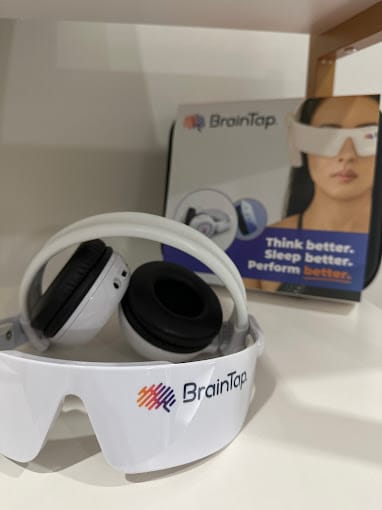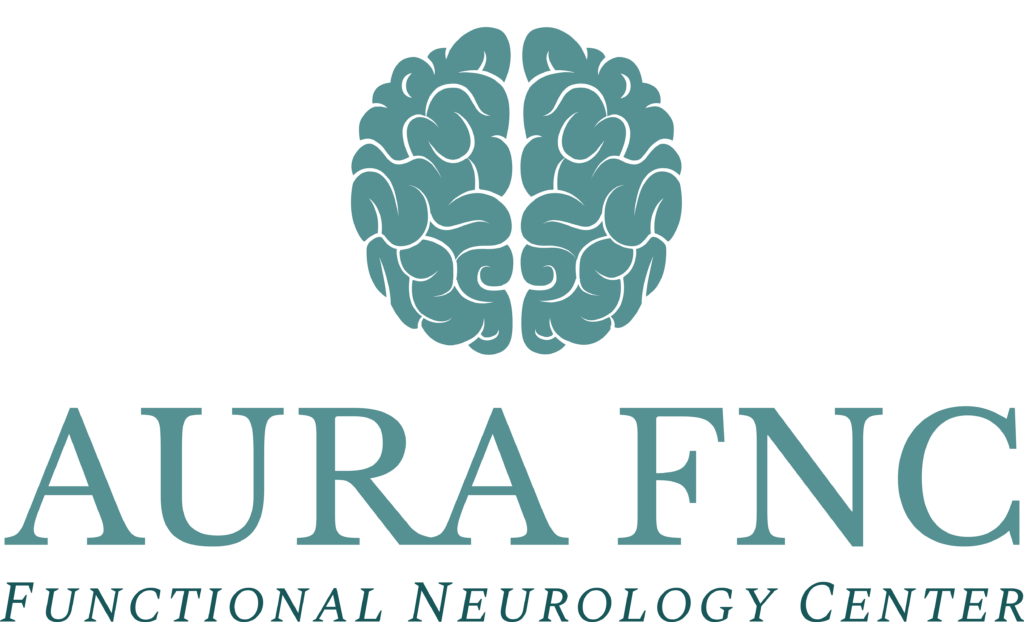BrainTap
What is BrainTap?
BrainTap is a unique and innovative system designed to help individuals achieve a higher state of mindfulness, relaxation, and overall mental wellness. It involves audio technology with guided meditation and visualization, BrainTap offers a holistic approach to brainwave training and meditation.
At its core, BrainTap utilizes binaural beats, isochronic tones, and other proprietary audio techniques to promote relaxation and stress reduction. By listening to these specially engineered audio tracks through headphones, the brain is gently guided into a more balanced and coherent state, allowing for a deeper level of meditation and mindfulness.
In addition to the audio component, BrainTap also incorporates visual elements through the use of a specialized headset that delivers light therapy to the user’s eyes. The auditory and visual input is used to modulate brain function by influencing neural activity through visual and auditory pathways, synchronizing the left and right hemispheres of the brain, further enhancing the benefits of guided meditation.

Dr. Diana Tyler DC, DACNB
Founder of Aura FNC with experience using BrainTap with her patients at the Aura FNC office located in Cumming, Georgia right outside the Atlanta area. Doctor of Chiropractic and Functional Neurologist. Graduate of Palmer College of Chiropractic and a Diplomate of the American Chiropractic Neurology Board.

The unique combination of audio and visual stimulation offered by BrainTap has been shown to help individuals overcome common issues such as stress, anxiety, sleep disturbances, and lack of focus. With regular use, many users report improvements in their overall sense of well-being and mental clarity.
BrainTap also offers a library of guided meditation sessions and visualization exercises that cater to specific needs and goals, such as improving sleep, boosting energy, enhancing creativity, and reducing pain.
BrainTap provides a comprehensive and effective tool for anyone looking to enhance their mental wellness and achieve a greater sense of inner peace. By harnessing the power of audio and visual stimulation, BrainTap offers a unique approach to meditation and relaxation that is accessible to anyone seeking to improve their mental health and overall quality of life.
How does BrainTap work?
BrainTap is a revolutionary new technology that harnesses the power of light and sound to help improve mental clarity, reduce stress, and enhance overall brain function. So, how exactly does BrainTap work?
The technology behind BrainTap is based on the principles of frequency following response (FFR), which is the brain’s natural tendency to synchronize with external stimuli, such as light and sound. During a BrainTap session, users wear a special headset that emits pulsating light and sound frequencies designed to guide the brain into a deep state of relaxation and focus.
The light and sound frequencies used in BrainTap are specifically tailored to stimulate different areas of the brain, promoting relaxation, creativity, and heightened awareness. As the brain synchronizes with these frequencies, users experience a deeply tranquil and meditative state, allowing for deep relaxation and stress reduction.
BrainTap, whether used as a tool for meditation or as a way to enhance productivity, offers a unique and effective way to improve overall brain health and wellness.
Benefits of Using BrainTap
In today’s fast-paced world, it’s no wonder that many of us struggle to find time to relax and unwind. Stress and anxiety have become a common part of life for many people, and can have a significant impact on our mental and physical health. This is where BrainTap comes in.
BrainTap is a cutting-edge technology that uses light and sound therapy to help people relax, de-stress, and improve their overall well-being. By using a combination of guided meditation, binaural beats, and other neuroacoustic techniques, BrainTap helps users to enter a state of deep relaxation and enhance their mental clarity.
There are many benefits to using BrainTap, including improved sleep, reduced stress and anxiety, enhanced focus and concentration, and increased energy levels. In addition, BrainTap can also help to improve mood and creativity, making it a valuable tool for those who are looking to enhance their overall quality of life.
In addition to promoting relaxation, BrainTap also helps to optimize brainwave patterns, which can lead to enhanced mental clarity, increased productivity, and a greater sense of overall well-being. By engaging with the brain at a deep level, BrainTap can help to rewire neural pathways.
One of the key advantages of BrainTap is its convenience. Unlike traditional meditation, which can be time-consuming and difficult to master, BrainTap can be used anywhere, anytime. Whether you’re at home, at work, or on the go, you can easily incorporate BrainTap into your daily routine and start reaping the benefits.
Deep Relaxation
Deep relaxation is a state of being that allows the body and mind to completely let go of tension and stress. It is a state of deep calm and tranquility that can have numerous health benefits for both the body and mind.
When we are deeply relaxed, our breathing slows down, our heart rate decreases, and our muscles let go of any tension they may be holding. This can have a profound effect on our overall well-being. Deep relaxation has been linked to reducing anxiety and depression, lowering blood pressure, improving digestion, and boosting the immune system.
There are many different ways to achieve deep relaxation, and different techniques work for different people. Some may find deep breathing exercises to be effective, while others may prefer meditation or yoga. Some people find that listening to calming music or sounds can help them relax deeply, while others may find that spending time in nature or taking a warm bath can bring about a state of deep relaxation.
Regardless of the method used, the key to deep relaxation is to let go of any thoughts or worries and allow the body and mind to simply be in the present moment. This can be challenging for many people, especially in today’s fast-paced world, but with practice, it can become easier to achieve deep relaxation.
Incorporating deep relaxation into our daily lives can have a profound impact on our overall health and well-being. Taking the time to relax deeply on a regular basis can help us manage stress more effectively, improve our mood, and enhance our overall quality of life. Whether it’s through yoga, meditation, deep breathing, or any other technique, finding ways to achieve deep relaxation is an important aspect of maintaining a healthy and balanced life.
Mental clarity
Mental clarity is the state of having a clear and focused mind, free from excessive distractions or confusion. It is the ability to think, reason, and make decisions with sharpness and precision. Achieving mental clarity is essential for overall well-being and optimal cognitive function.
When we experience mental clarity, we are better able to process information and solve problems efficiently. It allows us to be more present in the moment, fully engaged in our daily activities without feeling overwhelmed or scattered.
There are various ways to enhance mental clarity, including engaging in mindfulness practices such as meditation and deep breathing exercises. These activities can help quiet the mind and reduce mental chatter, allowing for clearer thinking and improved cognitive function.
Regular physical activity and a healthy diet are also crucial for maintaining mental clarity. Exercise increases blood flow to the brain, improving cognitive function and reducing mental fog. A diet rich in nutrient-dense foods such as fruits, vegetables, and whole grains provides the brain with the necessary fuel for optimal performance.
Managing stress is another key factor in achieving mental clarity. Chronic stress can cloud the mind and impede cognitive function, making it difficult to think clearly and make rational decisions. Engaging in stress-reducing activities such as yoga, tai chi, or spending time in nature can help calm the mind and improve mental clarity.
In today’s fast-paced world, it’s easy to become overwhelmed and mentally exhausted. However, prioritizing mental clarity is essential for our overall well-being.
Emotional Stability
Emotional stability is a crucial component of mental well-being and overall happiness. Individuals who are emotionally stable are able to manage their emotions in a healthy and balanced way, leading to a sense of inner peace and calmness even in the face of challenging situations.
One of the key characteristics of emotional stability is the ability to regulate and control one’s emotions. This means being able to remain calm and composed in the face of adversity, and not allowing negative emotions to take over and dictate one’s behavior. Emotionally stable individuals are able to effectively manage stress, anxiety, and other negative emotions, and are able to bounce back from setbacks and disappointments more quickly.
Several factors contribute to emotional stability, including genetics, upbringing, and life experiences. However, it is also a trait that can be cultivated and improved over time through various strategies such as practicing mindfulness and meditation, seeking therapy, engaging in regular physical activity, and regulating the autonomic nervous system with brain training.
Understanding Brainwave Entrainment and Frequencies of Light
Brainwave entrainment is a technique that uses rhythmic stimulation to synchronize the brain’s electrical activity with external stimuli. This can be achieved through a variety of methods, including audio and visual stimulation, but one of the most effective and popular ways is through the use of frequencies of light.
Frequencies of light are measured in hertz (Hz) and correspond to different states of consciousness. There are four main categories of brainwave frequencies: Delta (0.5 to 4 Hz), Theta (4 to 8 Hz), Alpha (8 to 14 Hz), and Beta (14 to 30 Hz). Each of these states of consciousness is associated with different mental and emotional states, and by using frequencies of light to entrain the brain, it is possible to induce specific states of mind.
For example, Delta frequencies are associated with deep sleep and unconsciousness, while Theta frequencies are linked to deep relaxation and meditation. Alpha frequencies are indicative of a relaxed and focused mental state, and Beta frequencies are associated with alertness and problem-solving.
By exposing the brain to specific frequencies of light, such as through the use of a light therapy device or a light and sound machine, it is possible to entrain the brain to produce these same frequencies. This can have a profound impact on mental and emotional well-being, as it can help to induce states of relaxation, focus, and mental clarity.
In addition to these specific brainwave frequencies, it is also possible to use frequencies of light to stimulate the production of neurotransmitters and hormones that are linked to mood and behavior. For example, certain frequencies of light have been shown to stimulate the production of serotonin, a neurotransmitter associated with feelings of well-being and happiness.
Overall, the use of brainwave entrainment and frequencies of light can be a powerful tool for promoting mental and emotional well-being. By understanding the different brainwave frequencies and how they correspond to states of consciousness, it is possible to use this knowledge to help improve mood, focus, and overall mental health. Whether used for relaxation, meditation, or problem-solving, brainwave entrainment and frequencies of light offer a promising avenue for improving mental and emotional well-being.
Brainwave entrainment explained
Brainwave entrainment is a technique that has been gaining popularity in recent years as a tool for improving cognitive function and reducing stress. This technique involves using rhythmic sound or light stimuli to synchronize the brain’s electrical activity with the frequency of the stimuli, thereby inducing specific brain states such as relaxation, focus, or sleep.
The basic idea behind brainwave entrainment is that the human brain naturally produces different types of electrical waves that correspond to different states of consciousness. For example, when we are awake and alert, our brains produce beta waves, while during states of deep relaxation or meditation, our brains produce theta waves. By using external stimuli to induce specific brainwave frequencies, it is believed that we can influence our brain states and achieve specific mental and emotional states more easily.
There are various methods of brainwave entrainment, including binaural beats, isochronic tones, and flashing lights. Binaural beats involve listening to two slightly different frequencies in each ear, which creates a third tone inside the brain that corresponds to the difference between the two frequencies. Isochronic tones involve listening to a single tone that is turned on and off at specific intervals. With flashing lights, the brain is entrained by watching a light source flashing at specific frequencies.
Research has shown that brainwave entrainment can be effective in helping to improve focus and concentration, reduce anxiety and stress, and promote relaxation and deep sleep. Many people report feeling more calm and centered after using brainwave entrainment techniques, and some even use it as a form of meditation or to enhance their creative abilities.
While brainwave entrainment can be a helpful tool for many people, it’s important to note that it may not be suitable for everyone. People with epilepsy or a history of seizures, as well as those with certain mental health conditions, should consult with a healthcare professional before using brainwave entrainment, as it may exacerbate their symptoms.
Brainwave entrainment is a fascinating technique that has the potential to positively impact our neurological well-being. Whether it’s to help us relax, improve our focus, or get a good night’s sleep, brainwave entrainment can be a valuable tool for anyone looking to enhance their cognitive function and reduce stress in their daily lives.
